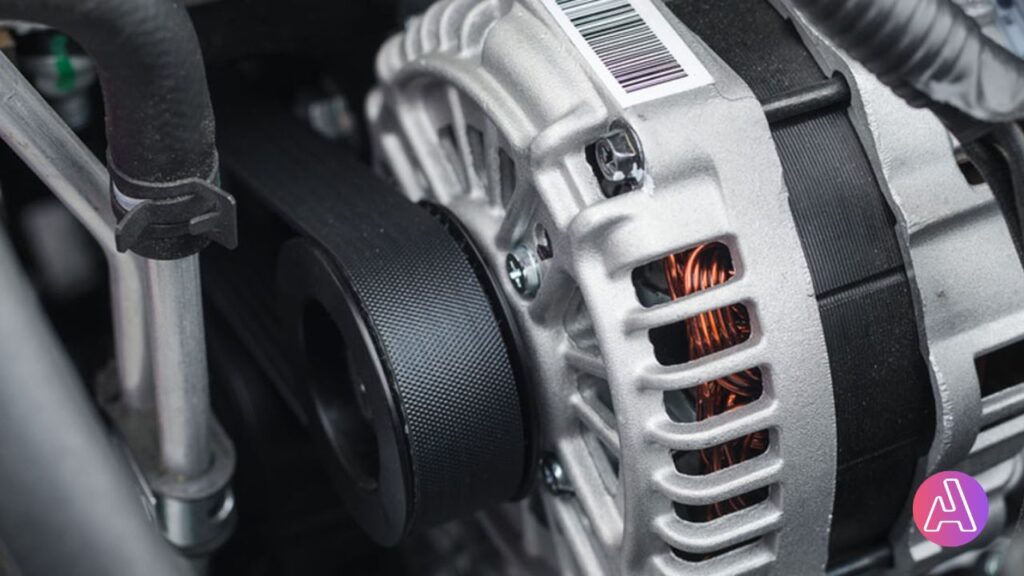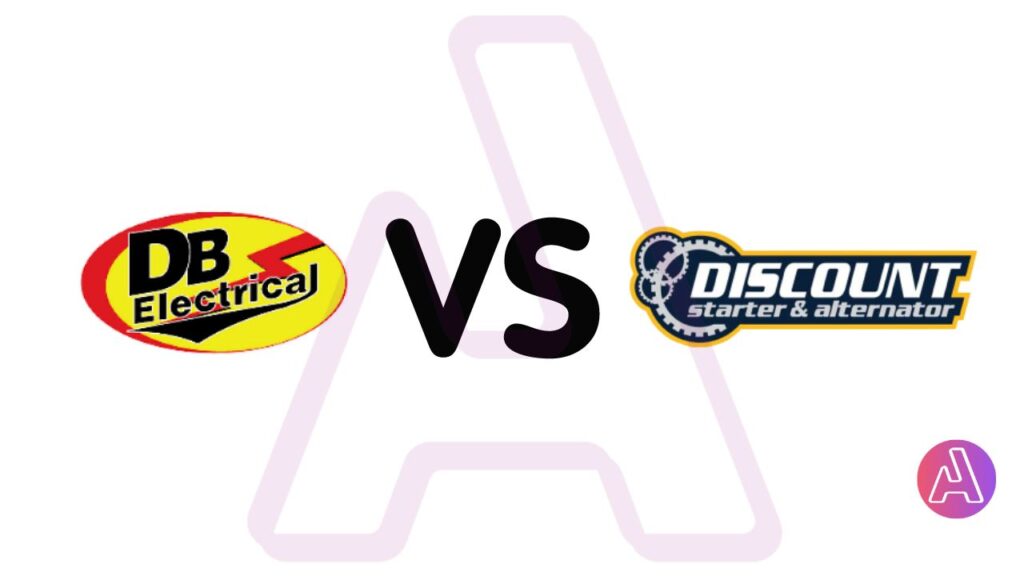Denso alternator is a reliable choice, and you should think about getting one if you need to replace or fix the one in your car. Wiring the alternator properly is important to get the most out of it and prevent electrical problems in the future.
This article will guide you and show you how to wire a Denso alternator step by step. It will talk about the most important things to consider and the best ways to complete a good wiring operation.
By the end of this article, you will be able to install the alternator if you read this article thoroughly and work accordingly. The steps are pretty easy and you don’t necessarily have to have practical experience to wire a Denso Alternator.
Wiring A Denso Alternator
1. Gathering the Necessary Tools and Materials
You’ll need the following tools and materials to wire a Denso Alternator or any sort of alternator
- Socket set
- Wrench set
- Wire crimper
- Wire cutter
- Electrical tape
- Voltage regulator (if not built into the alternator)
- Wiring diagram or reference material for your specific vehicle model
2. Disconnecting the Battery
Safety should always be a priority when working with electrical components so first, ensure your safety. Begin by disconnecting the negative terminal of the battery to avoid any potential electrical hazards.
3. Removing the Old Alternator
If you want to replace an alternator that has already been installed, you will need to remove the old one by first taking off the mounting nuts and then cutting the electrical connections.
You should carefully write down how the wiring is set up before you put in the new Denso generator. It is better to take notes during the session as at some points in the process, you will need these notes.
4. Identifying the Wiring Terminals
Before you continue connecting the Denso alternator, you need to find the different connections. Some of these links are for the battery, the ignition, the warning light, and the field.
Find out what each terminal is on your car by looking at the wiring diagram or other details about it. Wire the Denso Alternator using the wiring diagram or reference material, follow these steps to wire the Denso alternator:
- Connect the battery terminal of the alternator to the positive terminal of the battery using a suitable gauge wire.
- Connect the ignition terminal of the alternator to an ignition-switched power source. This connection ensures the alternator is activated when the vehicle’s ignition is turned on.
3. Connect the warning light terminal of the alternator to the warning light on your vehicle’s dashboard. This connection enables the warning light to illuminate if any issues arise with the charging system.
4. Connect the field terminal of the alternator to the voltage regulator or the appropriate wire in your vehicle’s wiring harness. This terminal regulates the alternator’s output voltage.
Remember to securely crimp and insulate all wire connections using the wire crimper and electrical tape to prevent any electrical shorts or loose connections.
5. Reconnecting the Battery
Once you have completed the wiring process, reconnect the negative terminal of the battery.
6. Testing the Alternator
After putting in the battery, it’s important to test it and to make sure it’s working right. Use a voltmeter to find out how much power is between the battery’s wires after starting the car’s engine.
If the alternator is running well, the voltage it puts out should be between 13.5 and 14.5 volts. If the voltage is much lower or much higher than normal, there may be a problem with the alternator or with the wiring that controls it.
7. Troubleshooting Common Issues
If you encounter any problems with the Denso alternator’s performance, here are a few common issues and troubleshooting steps:
● Low Charging Voltage: Check the connections and wiring for any loose or damaged components. Ensure the voltage regulator is functioning correctly.
● Overcharging: Verify the wiring connections and ensure the voltage regulator is working correctly. Excessive charging voltage can damage the battery and other electrical components.
● Warning Light Not Illuminating: Check the wiring connections between the alternator and the warning light. Replace the warning light bulb if necessary.
If you’re uncertain about any troubleshooting steps, consult a professional mechanic or refer to the manufacturer’s guidelines.
Denso Alternator 3-pin plug wiring diagram
Most Denso alternators have three places to connect wires: the B+ terminal, the ignition terminal (sometimes called the “L” or “IG”), and the S terminal. You can also call these things by other names when you talk about them. Here is a general description of each pin and what it does:
B+ Terminal: This pin, which is also known as the B+ Terminal, is the generator’s main power output pin. Most of the time, it will be hooked up to either the battery or the main power source. It charges the car’s battery and electricity system so they can work properly.
Ignition Terminal (L or IG): This pin is connected to either the “ignition switch” or the “voltage regulator,” based on which term you use. When the key to start the car is turned on, a power signal is sent to it. To start charging the battery, connect this connection to the “on” position on the generator.
S Terminal: This pin is sometimes called the “sense” terminal. This is another name for it. It is used to measure the voltage of the battery so that the charging power can be changed to match what the sensor says. Most of the time, the S contact is linked to the voltage regulator or the charge light on the instrument panel.
1. Tips for Maintenance and Longevity
To maximize the lifespan and performance of your Denso alternator, consider these maintenance tips:
- Regularly inspect the wiring connections for signs of corrosion, looseness, or wear.
- Clean the alternator’s exterior surfaces to remove dirt, debris, and grime.
- Keep the alternator and its surrounding area free from excessive moisture and extreme temperatures.
- Follow the manufacturer’s recommended maintenance schedule, if provided.
Final Words
Wiring a Denso alternator is simple and easy if you follow all of the steps and ideas in the right order. You can install or replace a Denso alternator in your car if you know how the wire connections work and use a wiring diagram or other guide. This is true whether you install the battery yourself or pay someone else to do it.
When the engine is running, it generates electric current that is used to charge the battery and power a number of other electrical parts and functions in the car. Here your. alternator plays the most crucial part.
After installing the alternator, you should try it out and fix any problems that come up. Safety should always be your number one priority. As long as you take care of the Denso alternator in your car, it will be able to give your car the right amount and the kind of energy it needs.
FAQs
1. How long does it take to hook up a Denso alternator?
Usually, wiring a car takes between 30 minutes and an hour, based on how well you know the car’s electrical system and how complicated the connections are.
2. Can I put a Denso alternator in any kind of car?
Denso alternators can be used in many different kinds of cars. But it’s important to make sure that the alternator’s specs and wiring lines are the same as what your car needs.
3. When I put in a Denso alternator, do I also need to change the voltage regulator?
Sometimes, the voltage regulator is built right into the Denso alternator. But if your car needs an external voltage regulator, it’s important to replace it or put it in according to the instructions from the maker.
4. What should I do if the battery isn’t getting charged by the alternator?
If the alternator isn’t charging the battery, check the wiring links to make sure they are tight and undamaged. You can also have a professional check the battery to see if it needs to be fixed or replaced.
5. Do Denso alternators cost more than those made by other companies?
Since Denso alternators are known for being good quality and reliable, they may cost a little more than other brands. However, they are a good purchase because they work well and last for a long time.


